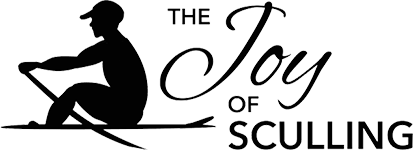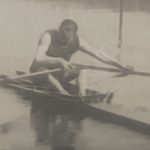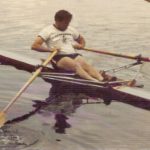Small Muscle Movement
For three mornings a week I go to a movement class. The leader for the group is quite an athletic young lady. She has great fluidity to her movements at the hands, wrists, shoulders, hips, knees and ankles. It is something that the whole group needs and would certainly be beneficial for any group of athletes. Too often strength, control and discipline of the muscles is stressed with the larger muscle groups and the smaller articular groups are overlooked.
This small muscle movement certainly plays a huge role in the technique timing of the trunk, legs, arms and blade to the water. The entry is a minute space and moment in time. The reversal of the movement is such a small segment in time. Unlike today when crews take so many movements (the preparation set out of bow, the square up, and the subsequent pausing of the blade above the water). The sculler’s entry is an instant marked by a feel of the water and load in the shoulders. The blade simply disappears at the full reach reach transition point.
Fitzpatrick had so little to say about it in words (Quiet man anyway who grinned a lot). He spent enormous amount of time on the release, follow through and recovery. It is the timing of the swing on the recovery and the seat blade timing that are so critical. This is what Hanlan studied the pendular action of the trunk. Fellow oarsmen in the St. Catharines locker room would ask me about the wonderful entry. The answer would be, I don’t know, it was a mystery. It was the unorthodox sculler’s entry. It was Henry Robert Pearce/Bob Fitzpatrick entry- the blade is feathered one moment and the blade disappears the next moment. It is that quick.
But, it all goes back to athleticism of the athlete; the ability to move the fingers, wrists, shoulder joint, knee and ankle joints quickly. Hanlan first discovered this in the fixed seat shells. It is so simple if we return to Hanlan’s pendular swing.
Watching the ballet tonight I was struck by the completeness of any given movement, -the connection from the toes to the tips of the fingers. The present day scullers and our elite oarsmen look so fragmented. Integration is not present. When the integration of the movements are present, it is so powerful as the dancer easily reaches the maximal of his vertical lift off the floor.
The fingers,the wrists, the elbows, the shoulders, feet, ankles, knees and hips all have such power, flow and control. The total human package is complete. The total organism has an integrated flow quality to it. How do we achieve this with our younger athletes? We need to drill, work and concentrate on those smaller muscle movements. The image of the dancer as the ultimate athlete is important to keep in mind.
“Funny you should pen the above,” wrote Giusseppe Lund:
“My earliest physical training was in ballet. The only reason that It didn’t become my career was that my teachers said I was going to be too big. That wouldn’t have happened these days.
As a youth people always commented that it was my ease of movement and not strength that helped me. Luckily I didn’t believe them or I might never have become a blacksmith. I spend more time correcting posture and movement than anything else with my apprentices. Hopefully that will benefit them in the long run and certainly prevent injury.” 1
This is certainly a challenge for our programming. We first must be aware of the power wastage in our training and subsequent performance when you do not give careful attention to the small muscle movements. This emphasis on the small muscle movement should begin at the start of the training of the young athlete. It is done in the context of great posture.
1 Correspondence from Giusseppe Lund, a master craftsman with iron and a sculler.

















